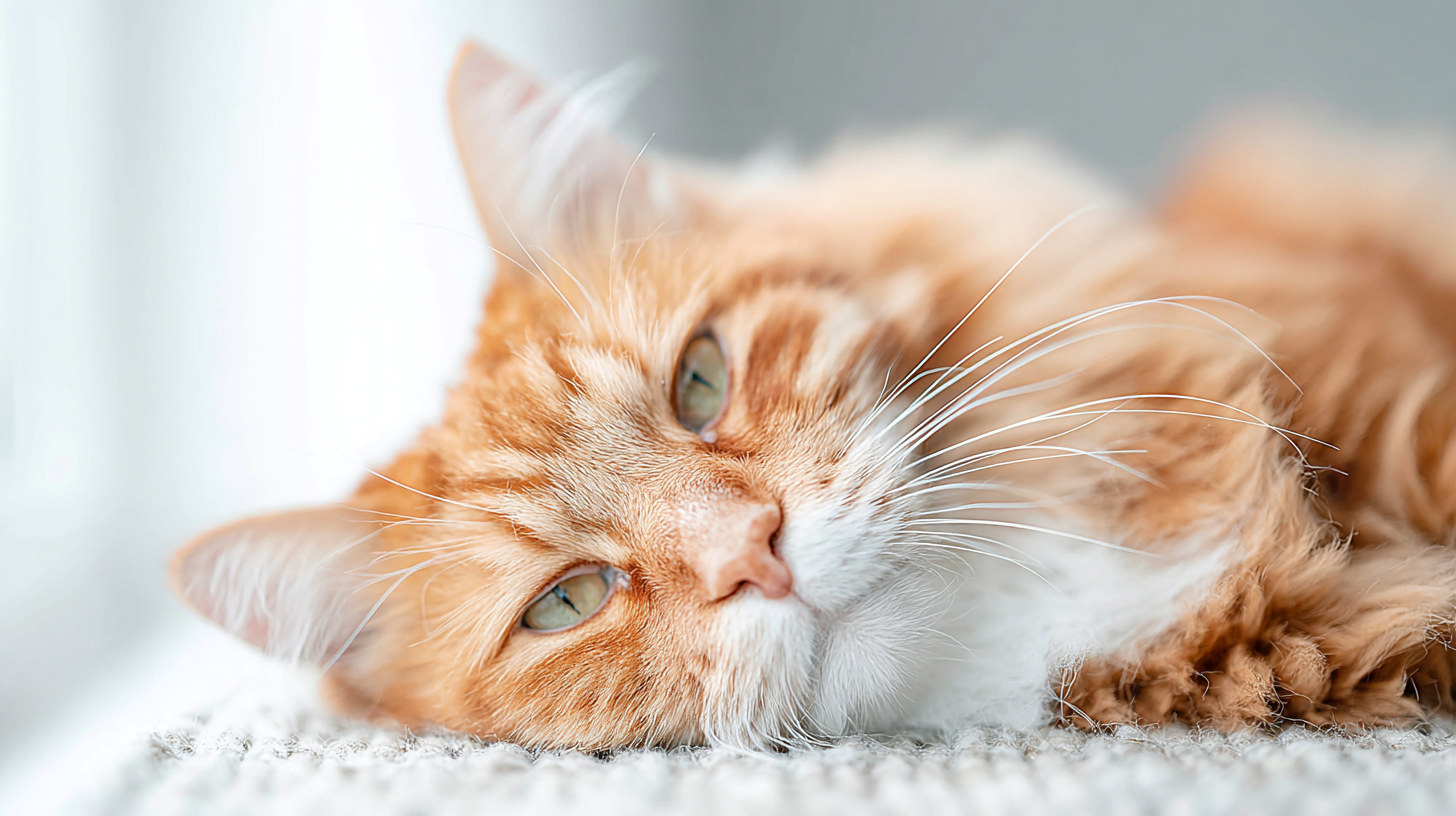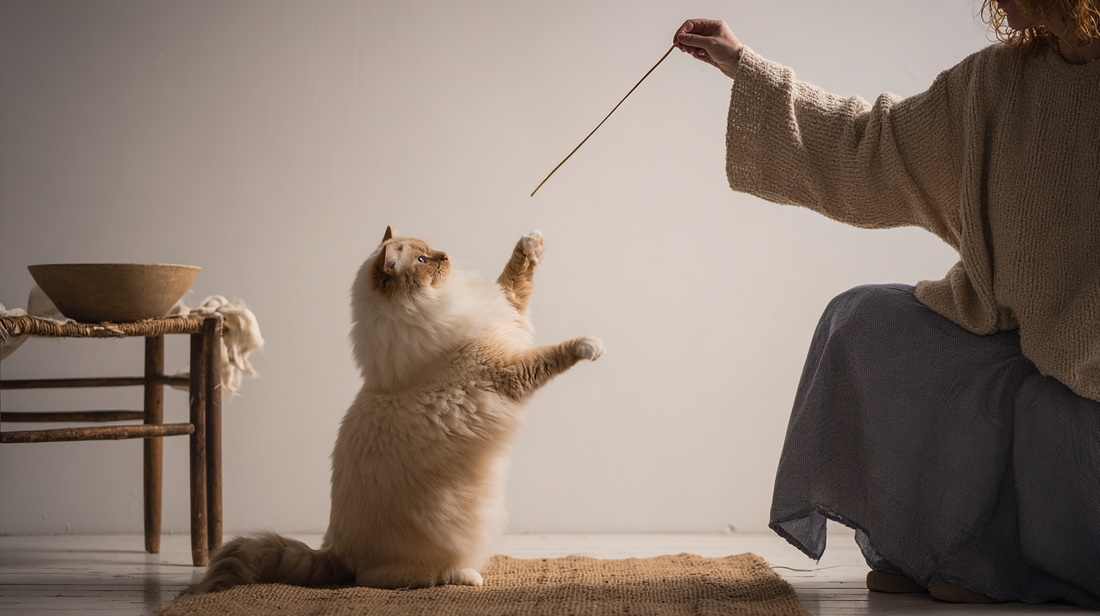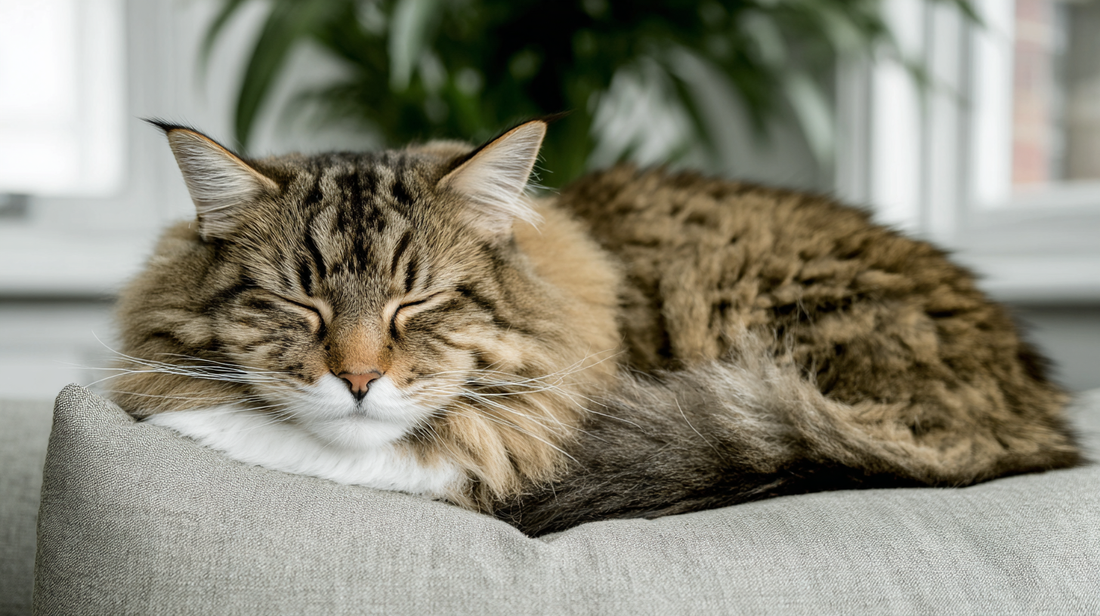As a veterinarian, I deeply understand the special bond you share with your feline companions. You want them comfortable and healthy regardless of weather conditions. When temperatures rise, knowing how to cool down your cat becomes absolutely essential. Cats, with their dense fur coats and unique physiology, can be particularly challenging to understand when it comes to heat tolerance. My goal today is to provide you with practical, science-backed strategies that will keep your beloved cat cool and comfortable when temperatures climb. Understanding how to cool down your cat effectively can make the difference between a comfortable pet and a medical emergency.
Summary
Understanding why cats struggle with heat regulation
Unlike humans who can sweat across most of their skin, your cat has much more limited cooling abilities. Your feline companion primarily relies on panting and evaporation from their paw pads, plus extensive grooming to spread saliva on their fur for evaporative cooling. This unique physiology significantly impairs their temperature regulation abilities, making them particularly prone to overheating. Learning how to cool down your cat starts with understanding these physiological limitations.
Special considerations for flat-faced breeds
If you own brachycephalic breeds with flattened faces like Persians and Himalayans, you'll need to pay particular attention during warm weather. Their unique anatomy further compromises their heat dissipation efficiency. Imagine trying to breathe through a narrow straw while running a marathon—that's exactly what extreme heat feels like for your flat-faced cat. Their respiratory systems are simply less effective at cooling, which dramatically increases their overheating susceptibility. Knowing how to cool down your cat of these breeds requires extra vigilance and specialized approaches.
The role of body condition in temperature control
Your cat's body condition plays a significant role in their ability to stay cool. Just like in humans, obesity in cats promotes systemic inflammation, and excess body fat acts as unwanted insulation, making effective cooling much more difficult. This is why maintaining an ideal body condition score (BCS) is absolutely crucial for your cat's overall health and greatly enhances their ability to handle environmental stressors, including heat.

Recognizing the warning signs of overheating in cats
Your cat will often hide illness or discomfort signs, which makes overheating detection particularly tricky. Learning to read your cat's body language and behavior is absolutely vital for understanding how to cool down your cat effectively. Remember, prompt recognition prevents mild discomfort from escalating into serious health issues. The sooner you recognize these signs, the more effectively you can implement strategies for how to cool down your cat.
Behavioral and physical indicators to monitor
Watch carefully for these overheating indicators: excessive vocalization such as more meowing, yowling, or unusual sounds than normal; changes in posture and resting places including ears flattened back, seeking unusual cooler spots, hiding, or seeking high perches on countertops, cabinets, or cat trees, which typically signals environmental stress; altered grooming patterns where excessive grooming can indicate stress while stopping grooming entirely may signal lethargy or illness.
Additionally, you should be alert for panting, which unlike in dogs, prolonged or labored panting in your cat is a serious distress and overheating sign. Watch for lethargy or reduced activity where your usually playful cat becomes unusually quiet or unresponsive, and gastrointestinal upset including salivating, lip licking, or refusing food which can indicate nausea associated with stress and discomfort.
Clinical signs veterinarians monitor
How to cool down your cat: Proven home strategies
Implementing proactive strategies will significantly improve your cat's comfort during warm periods. A comprehensive approach that addresses environment, hydration, and gentle interventions provides the best results for your feline friend. Mastering how to cool down your cat involves multiple complementary techniques working together.
Creating an optimal cool environment
A low-stress environment is absolutely fundamental to your cat's well-being, particularly when it comes to temperature control. You should provide safe places and vertical space where your cat can find secure havens where they feel safe from environmental stressors like heat. Make sure your cat has access to cool, dark hiding spots such as closets or shaded room areas. Vertical spaces like cat trees or shelves offer excellent escape options and access to cooler air.
You can enhance comfort with familiar elements since your cat relies heavily on their sense of smell. Place soft bedding with familiar scents in various spots throughout your home to increase their comfort. Use cool, damp towels or soft fleece pads on their favorite resting surfaces to create cooler options.
To support air movement during warm weather, use oscillating fans to create a gentle breeze, which can help your cat feel more comfortable—especially for breeds that are more sensitive to heat. This wind chill effect promotes a cooling sensation and can have a natural calming influence. In addition, consider environmental strategies to reduce stress, such as introducing familiar scents or maintaining a quiet, secure space. If your cat tends to become anxious when travelling, using a pheromone spray inside the carrier about 30 minutes in advance or allowing your cat to explore it beforehand may help reduce tension.

Managing hydration and feeding for temperature control
Proper hydration is absolutely crucial for your cat's health, especially during hot weather. You should encourage water intake by ensuring your cat has constant access to fresh, cool water. Some cats prefer running water from fountains, while others like multiple bowls placed strategically throughout the house. You can increase their water intake by feeding wet food with higher moisture content. Remember that adult cats typically need less than 200 milliliters of water daily, or under 50 milliliters per kilogram of body weight. Effective hydration management is a cornerstone of how to cool down your cat successfully.
You should adjust feeding routines by offering your cat several smaller portions throughout the day instead of large meals. Digestion naturally generates body heat (meal-induced thermogenesis), so smaller portions help minimize this effect during the hotter periods of the day.

Safe physical cooling techniques
While your cat may resist direct cooling attempts, gentle methods can certainly help. You can use cool, damp cloths by gently wiping your cat's fur with cool, damp (not soaking) cloths, particularly around their ears, paws, and underbelly for effective evaporative cooling without causing stress. These gentle approaches are essential components of how to cool down your cat without causing additional stress.
Focus on positive reinforcement and handling by building positive relationships with your cat through gentle touch and high-value treats, which makes them much more receptive to your help. Teaching your cat that handling is a positive experience makes cooling interventions significantly easier. If your cat tolerates paw stroking (one of their few "sweating" areas), you can gently dab them with cool cloths.
When professional help is needed: Recognizing emergency situations
You need to know when home remedies aren't sufficient and professional medical attention becomes necessary. If you observe persistent abnormal behavior, worsening distress signs, or severe overheating symptoms like prolonged panting, severe lethargy, or collapse, you should contact your veterinarian immediately. Understanding when your knowledge of how to cool down your cat isn't enough can be lifesaving.
Remember that veterinary professionals are here to partner with you in your pet's care. Don't hesitate to reach out with any concerns you may have. We can help diagnose underlying issues, provide intensive cooling measures, and offer tailored advice for your cat's specific health profile. Clear, empathetic communication with your veterinary team ensures the best possible outcomes for your beloved companion.

Your role as your cat's climate guardian
Learning how to cool down your cat is absolutely essential for ensuring their comfort and health. By understanding their unique physiology, recognizing subtle overheating signs, and proactively implementing environmental and care strategies, you can significantly enhance your cat's well-being during warm weather. Think of yourself as your cat's personal climate control system, constantly monitoring and adjusting to keep their internal environment perfectly balanced. Your attentiveness and proactive care are truly the best tools you have for ensuring your feline friend remains cool, calm, and purring happily all season long. Mastering how to cool down your cat is one of the most valuable skills any cat owner can develop.
The information in this article is based on the following scientific publications:
- Elliott, J., & Grauer, G. (Eds.). (2006-2007). BSAVA Manual of Canine and Feline Nephrology and Urology (2nd ed.). BSAVA Publications.
- Villiers, E., & Blackwood, L. (Eds.). (2005). BSAVA Manual of Canine and Feline Clinical Pathology (2nd ed.). BSAVA Publications, Gloucester
- Horwitz, D. F., & Mills, D. S. (Eds.). (2009). BSAVA Manual of Canine and Feline Behavioural Medicine (2nd ed.). BSAVA Publications, Gloucester
- Harvey, A., & Tasker, S. (Eds.). BSAVA Manual of Feline Practice: A Foundation Manual. BSAVA Publications
- Rendle, M., & Hinde-Megarity, J. (Eds.). (2022). BSAVA Manual of Practical Veterinary Welfare (1st ed.). BSAVA Publications.




